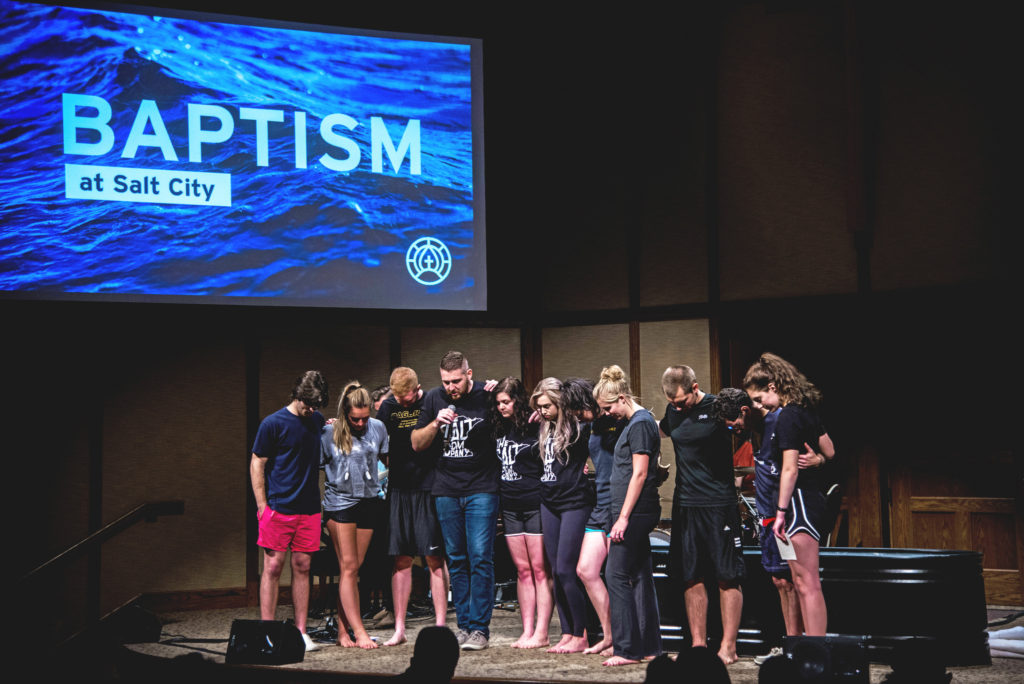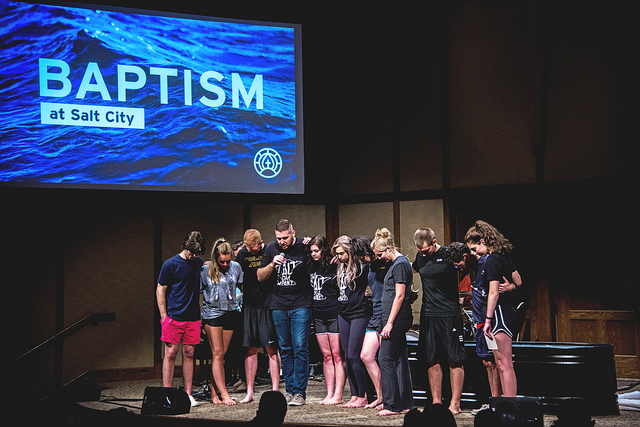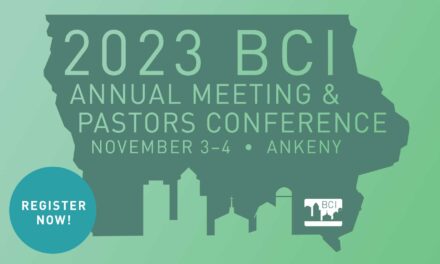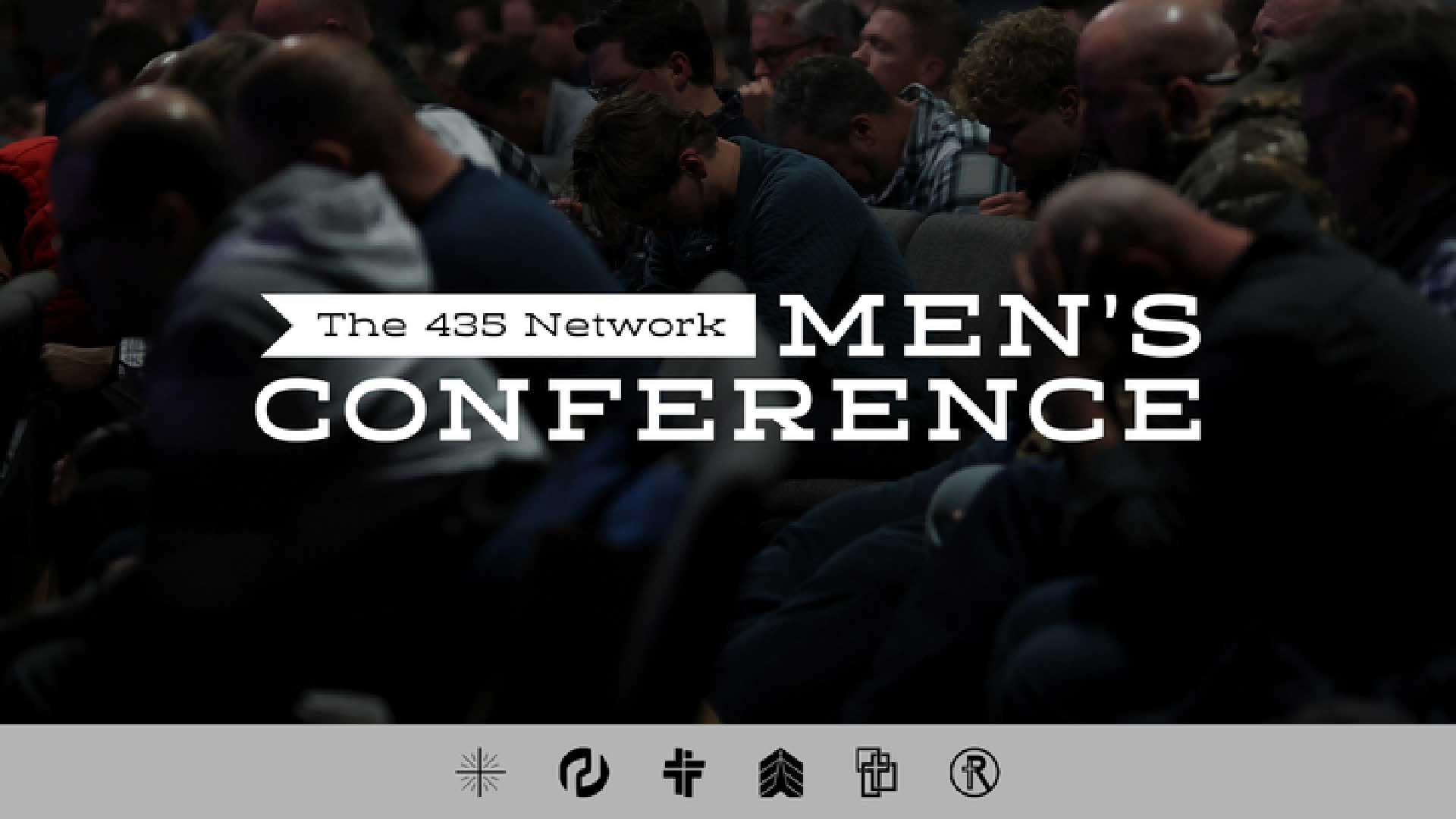
Jordan Adams (holding microphone) prays over a group during a recent Salt City Church baptism service. Adams, the college pastor, and lead pastor Drew Stevenson were sent out together by Cornerstone Church in Ames, Iowa, to plant in Minneapolis. They currently average around 225 people attending weekly services, and they’ve baptized 10 people and witnessed at least 15 salvations. Salt City Church is part of Southern Baptists’ church planting ͞Class of 2017. Photo courtesy of Salt City Church.
By Brandon Elrod
ALPHARETTA, Ga. (BP) — One October morning in 2017, a young lady visited a new church in Montréal. She didn’t have a positive view of Christianity, but something struck a chord with her that morning.
“She came up to me after the service and told me she didn’t understand what she was feeling,” said Jackson Ntumba, pastor of La Chapelle Ahuntsic, a church plant that launched in September 2017. “She didn’t know Jesus, but she wanted to know more about Him.”
She spent time after La Chapelle’s Sunday services in the church’s one-on-one ministry which is designed to facilitate conversations about Christianity. She gave her life to Christ and was baptized the following month.
La Chapelle in Ahuntsic is the second church to be birthed out of La Chapelle in Montréal, which itself was planted only five years ago. The young church averages between 350-400 people and has already baptized nine people.
Each year, Southern Baptists start hundreds of new congregations across North America. Most receive logistical and financial assistance from outside sources. Those sources include Sending or Supporting Churches, state Baptist conventions and the North American Mission Board’s (NAMB) Send Network.
As the national entity with the assignment to assist Southern Baptists with church planting, NAMB offers all Southern Baptist planters membership in its Planter and Spouse Care Network. NAMB also provides funding, training, coaching and other resources for many church plants and planters.
In 2017, Southern Baptists planted 691 new churches in North America. An additional 284 churches affiliated with Southern Baptists, bringing the total number of new churches added to 975.
“We are incredibly grateful for every new church that was started last year and for the missionaries who are leading them,” said NAMB president Kevin Ezell.
Bridging generations in Colorado
Trailhead Church launched in January of 2017 in Wellington, Co. One of the church’s first baptisms was a 72-year-old man named Gene who attended their final preview service in 2016. After months of discipleship, church planting missionary John Richardson baptized Gene on Sept. 24, 2017.
“Gene has only missed one service since he first came,” Richardson said, “and he’s become a regular volunteer and encourager in our church.”
Since Trailhead’s launch, they have baptized 17 new believers and are currently averaging 157 in weekly worship attendance. They also have 102 people engaged in small groups.
A church for the campus and the community
Drew Stevenson and Jordan Adams have been a part of the collegiate church planting movement and launched Salt City Church in Minneapolis in Sept. 2017. Already, they average around 225 people in worship attendance. They have baptized ten people and seen at least 15 salvations, two of those being an engaged couple.
Stevenson emphasized the importance of NAMB and the Southern Baptist community.
“I just had my sixth child. My son Jude was born with a congenital heart defect,” he said. “Within twelve hours of tweeting about it, Micah Millican, [NAMB’s director of planter and spouse care], reached out to me. Then Kevin Ezell retweeted the tweet, and I felt like family when people started praying for us.”
NAMB church planting strategy explained
Through Send Network, NAMB emphasizes to church planters that their SBC partners—churches, associations, state conventions and entities—operate like a family.
The Send Network team also regularly finds ways to improve its strategy so the Southern Baptist churches NAMB helps plant get off to a solid start, are built to last and are designed to multiply.
Since 2010, NAMB has restructured the way it counts church plants to better track and assess progress. Churches that newly affiliate with the SBC are separated out from the annual count. Every new church plant is required to have an identification number to ensure churches will be included only once in NAMB’s tally.
The updates and improvements, coupled with NAMB’s more rigorous assessment process for planters, have led to a drop in the number of churches planted since 2010. The changes have allowed for increased accountability in Southern Baptists’ church planting efforts. The result has been church planters who are better equipped for ministry over the long haul. Overall, 81 percent of churches planted since 2010 are still active in the 2016 ACP report.
Since an average of 900 churches die or otherwise drop off Southern Baptist roles each year, Ezell says Southern Baptists need to plant around 1,200 new churches annually.
“We need more qualified church planters,” Ezell said. “A lot of our work right now is focused on helping churches identify and develop leaders in their church who might someday feel called to plant. There is a huge harvest, and we all need to pray for more workers.”
Brandon Elrod writes for the North American Mission Board.
Originally published at https://www.namb.net/news/class-of-2017-church-plants-proclaim-jesus-change-lives.









